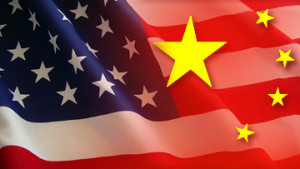
As was forecasted at the end of the 1990s, all three main components of the United States’ Comprehensive National Power (CNP) are susceptible to certain erosion when contrasted with the level of CNP growth of China. Therefore, the issue of how to optimally allocate resources to implement the strategy of containing China has been steadily growing in importance. For example, the military has “left Iraq” and the analogous “leaving of Afghanistan” is also currently in the works. These events are mostly a reaction to the American military analyst criticisms aimed at the country’s leadership due to the fact that “our army is almost completely stuck in the middle of nowhere and are doing God knows what chasing after some ‘terrorists’. At a time when we are faced with a real threat on the western shores of the Pacific where we only have a Marine Corps”.
The second of these “small” but significantly more sensitive issues deals with virtually the entire system of Transatlantic relationships, the foundation of American strategy during the Cold War. There is a new global game unfolding and it is centred on the opposite side of the globe from the European Atlantic, making the abovementioned system that essentially preserves the appearance of the long since concluded global conflict look increasingly anachronistic.
The archaic nature of the main Transatlantic structure that is NATO cannot be hidden by the rhetoric of the Chicago declaration on “modernizing” with the goal of “globalising” this alliance. What kind of “globalisation” of NATO this could mean is a mystery when almost all European members of this alliance do not express any interest towards the military and political problems of nations situated anywhere on the Eurasian continent that is to the east of Iran. That is, the area where the more east we go, the more problems exist for the NATO leader and current key European ally.
The exception here could only be the “young democracies” of eastern Europe. But these limitrophe quasi-nations could never offer their patron anything other than complete obedience in all matters.
The global politics of the EU, unlike those of the U.S., have nothing to share with China. At the same time, in terms of their economic spheres, the EU and China wonderfully compliment each other. It appears that both sides intend to further expand on their already fairly extensive trade relations. One of the indicators that confirms this was the triumphant welcoming of Germany’s Chancellor Angela Merkel in Beijing during her visit to China in the fall of 2012. Washington’s outcries are the only things stopping the Europeans from abandoning the embargo on weapon sales to China, which was instituted in its time due to the infamous incident on Tiananmen Square.
Thus it would not be overzealous to call the “pivot-shift” of American policy towards Asia-Pacific as a kind of “endurance test” of the entire system of Transatlantic relations, including NATO.
In these circumstances, a “green light” was given to an initiative that has been discussed at length regarding the creation of the Transatlantic Trade and Investment Partnership (TTIP). However, as it happened with its Pacific “precursor” the Trans-Pacific Partnership (TPP), the TTIP encountered some serious problems. They caused the January 22, 2014 announcement made by the head of the EU about indefinitely postponing any further negotiations with Washington about this topic.
Furthermore, even with the new American rhetoric towards the EU, two significant and interconnected issues still loom large in the background. This is the necessity of the U.S. to strategically concentrate on China and, therefore, the unavoidable divergence in the key interests of the two sides of the Atlantic.
The “victim” of this necessity could become (but not necessarily) the significant progress made in the American policies towards India. In the end, the issue of the limit of the available government resources is at the forefront of the discussion about whether the nations in the Pacific and the Indian oceans truly make up a single strategic entity. Rudimentary reasoning (offered in particular by Robert Kaplan in 2010) shows that this is indeed the case. It is enough to refer to the problem of controlling the Sea Lines of Communication (SLOC), an issue which has been strategically significant since the times of the Napoleonic Wars.
Today, it is critically important for all three leading Asian nations (China, Japan and India) to control the maritime hydrocarbon transportation lines from the Persian Gulf and Africa. These lines pass through the Indian Ocean, the Strait of Malacca and the sea, the western part of the Pacific Ocean. Because the so-called “resource problem” (in this case, natural resources) is one of the foundations for the new regional and global game, the SLOCs that begin in the north-west of the Indian ocean are that same “staple” that link both oceanic regions into one strategical entity.
If the United States’ plans include “discreetly” keeping their hands over the throat of the Chinese economy, then there is no better way to accomplish this other than to control the Indian-Pacific SLOCs. Additionally, this is why the American leadership has numerous times talked about the importance of developing comprehensive relations with India. However, some experts, without discounting the strategic importance of the Indian Ocean region, still state that because there is a limit to Washington’s available resources, it should focus on Eastern Asia.
To be continued.
Vladimir Terekhov is a leading research assistant at the Centre for Asia and the Middle East of the Russian Institute of Strategic Research exclusively for the online magazine New Eastern Outlook.
